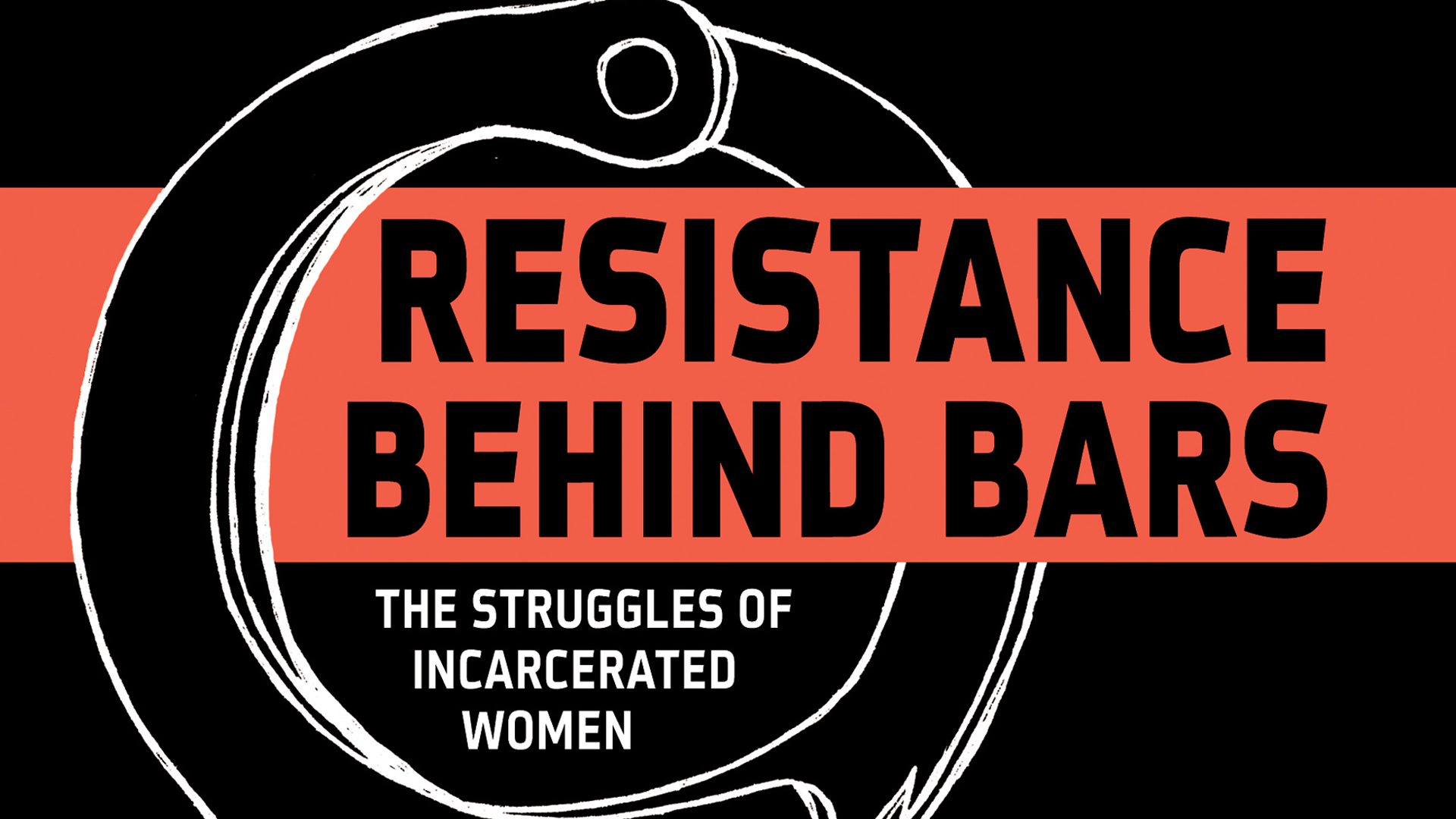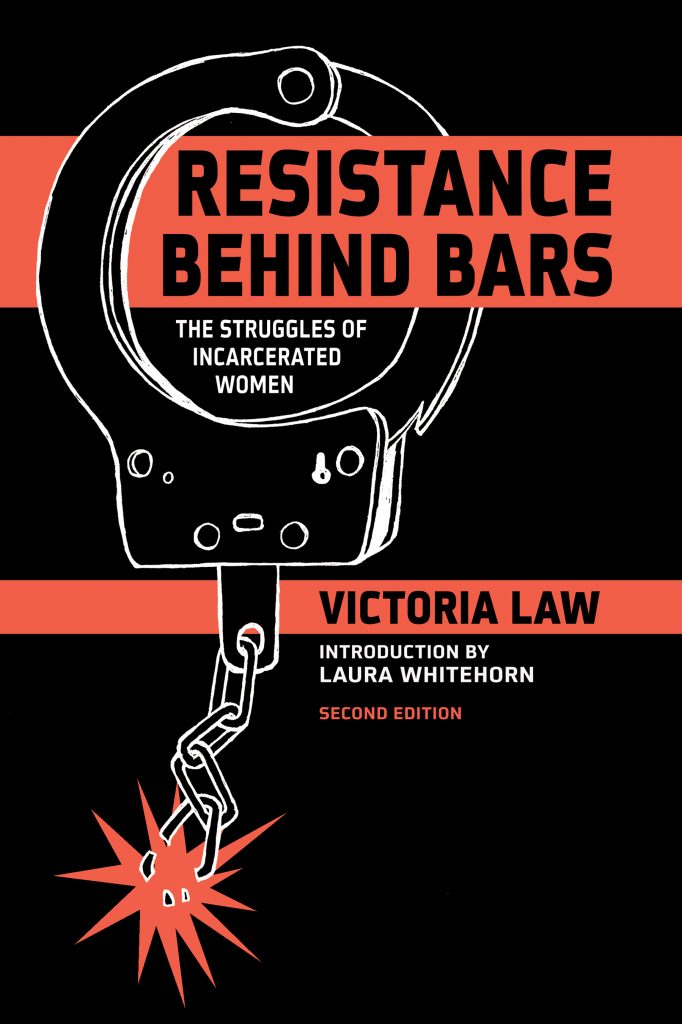by Sasha
Earth First! Newswire
May 22nd, 2013
In her latest edition of Resistance Behind Bars: The Struggle of Incarcerated Women (PM
Press 2012), Victoria Law offers us a whole-hearted chronicle of
despair and resistance in the modern prison industry. It is worth a good
read by anyone interested in the sociology of American life, as well as
any radical with friends or comrades behind bars. Law’s accounts of
women prisoners taking action are so inspirational that you will never
be the same after reading them.
With an approach resembling the old underground chronicles of the Soviet samizdat press, Resistance Behind Bars carries
no piece of frivolity in its tight, hard-hitting prose. Law moves from
facts to facts, drawing out broad truths about the prison industry’s
systematic oppression of women throughout the United States of America.
What we find is rampant sexual abuse, neglect, and manipulation—the
holding of women in shameful conditions where prison becomes an almost
airtight container for misogyny and patriarchy. But there is hope in
resistance.
Law’s work is crucial, because the greatest recent
works on the prison industry (for instance, Ruth Gilmore Wilson’s Golden
Gulag, Micelle Alexander’s The New Jim Crow, and the Let
Freedom Ring anthology) are more focused on male prisoners. “Many
activist-oriented publications mirror the mainstream media’s
masculinization of prisons and prisoners, contributing to the
invisibility of women behind bars,” states Law. “Because they receive
much less attention than their male counterparts, women in prison
receive much less support from both individual activists and prisoner
rights groups.”
By revealing the obscured facts of prisoners’ oppression, Resistance Behind Bars exposes
immediately the need for such a work. During an investigation of two
women’s prisons in Michigan in 1994, the Justice Department found that
“nearly every woman… interviewed reported various sexually aggressive
acts of guards,” while a 1996 Human Rights Watch report exposes
commonplace reprisals of guards against women who complain. In one
mind-blowing statistic, Law explains, “[i]n both men’s and women’s
prisons, prisoners are more likely to experience sexual violence at the
hands of prison staff than from their fellow prisoners.
In his vital text The Gulag Archipelago,
Alexander Solzhenitsyn writes, “If only there were evil people
somewhere insidiously committing evil deeds, and it were necessary only
to separate them from the rest of us and destroy them. But the line
dividing good and evil cuts through the heart of every human being. And
who is willing to destroy a piece of his own heart?” Victoria Law’s
impressive chronicle opens the heart of humanity with stories of
resistance—stories of love and patience more than rage and riot, which
are most commonly associated with prison resistance.
Law’s
intensive investigations obviate exhaustive knowledge of the day-to-day
situations of resistance, such as the spreading of information, the slow
motion of court cases, and the relationships of people involved. She
discusses the surges of women’s movements behind bars, the media,
communications, and alliances formed between heroic women willing to
risk their bodies and their access to others for mutual aid and basic
rights. Law notes the critical and lasting impact of magazines like Sojourner: A Women’s Forum,
which helps women resist “feeling as if their words, thoughts and
actions are meaningless. For these women, having their words and
thoughts taken seriously is, in and of itself, a major achievement.”
Media also presents “an act of subversion against both their own lack of
agency and the isolating effects of prison.”
So much of the
struggle against oppressive conditions takes place in the battle for
information. Information being shared between people, on personal levels
as well as through magazines, leads to liberation. One crucial chapter
in Resistance Behind Bars illustrates this point through a
discussion about detention facilities and women subject to incarceration
awaiting deportation. Many of these women do not speak English, yet
prison officials often place them among English speaking populations
without any translators. The ability of prisoners to then work together
to create unity beyond the language gap indicates the compassion and
tender, careful relationship-building that accompanies being together in
prison.
In a welcome addition to the second edition of Resistance Behind Bars,
Law presents a stirring analysis of incarcerated trans people.
Authorities place trans people in prisons according to their sexual
organs at birth, a practice which leads directly to increased abuse and
alienation. In one tragic example, Dee Farmer, a trans woman, was placed
in Terre Haute (an institution that will ring a bell for ecodefense
activist), where she was repeatedly beaten, raped, and infected with
HIV. Trans men in women’s prisons have traditionally been confronted
with abuse from guards, including even forced segregation.
Cis-privilege, in general, is reified within the patriarchal container
by the guards. Law declares, “[n]arratives of transgender, gender
variant and intersex people’s resistance in prisons are rare. This
should not be interpreted to mean that they do not resist prison abuses.
Instead, researchers, activists, and abolitionists should see the
conspicuous absence of transgender, gender variant and intersex stories
of resistance behind bars as a challenge to dig further, figure out why
such tales are absent and do what isneeded to both end the silence and
support their struggles.”
Resistance Behind Bars is
replete with such harrowing stories of women acting out of their own
agency, against assault and neglect, with little tools to win the fight.
One example is that of Stacy Barker, whose successful lawsuit against
the Michigan Department of Corrections led to an onslaught of cell
searches yielding “contraband violations” for iron pills and Ibuprofen.
When the corrections officials used the violations to keep Barker from
visiting her daughter, she joined a large suit against the regulations
keeping mothers from their children—and won.
Much of women’s resistance in prison stems from letter writing campaigns, newsletters, and law suits. These efforts are forwarded by education efforts behind bars. Law discusses the awesome work of Marcia Bunney, who used her job in the prison library to teach herself law, eventually becoming one of five prisoner representatives of the National Steering Committee of the National Lawyers’ Guild’s Prison Law Project. The classes taught behind bars, Law shows, are frequently degrading, humiliating, and repressive, but offer rewards for those who can work through the system.
Even
working through the system can bring new roadblocks, however. A request
for medical treatment can bring unwanted reactions from authorities,
for instance. “Women in prison face not only medical neglect and
malpractice,” writes Law, “but also retaliation from the prison
administration should they advocate for themselves and demand adequate
treatment.”
Underlying the lack of care is a basic lack of
counseling and information available to prisoners with AIDS and
hepatitis C, but Law notes that prisoners team together to pass on their
knowledge, speak out, file lawsuits, and make their daily lives
livable. One example is that of Charisse Shumate, whose work with other
inmates with sickle-cell anemia led to a class-action lawsuit, Schumate
v. Wilson, that resulted in preventative care (although Shumate would
succumb to her illness before the case was settled).
In the seminal In Russian and French Prisons, Peter
Kropotkin declares, “No autocracy can be imagined without its Tower or
Bastille.” The symbol of the central prison, and the possibility of its
rupture, makes history. The U.S., with its tentacle-like prison industry
complex provides multiple histories of oppression and autocracy. Law
shows that much of the most important work to benefit prisoners comes
from the prisoners themselves, in a heroic movement with support groups
around the world working to fight the system. The hard task abolishing
the prison industry is upon us, and it builds from the kind basic
communication of facts and truths presented in Resistance Behind Bars—this is a method steeped in the feminist tradition, and it is one worth taking up at once.







